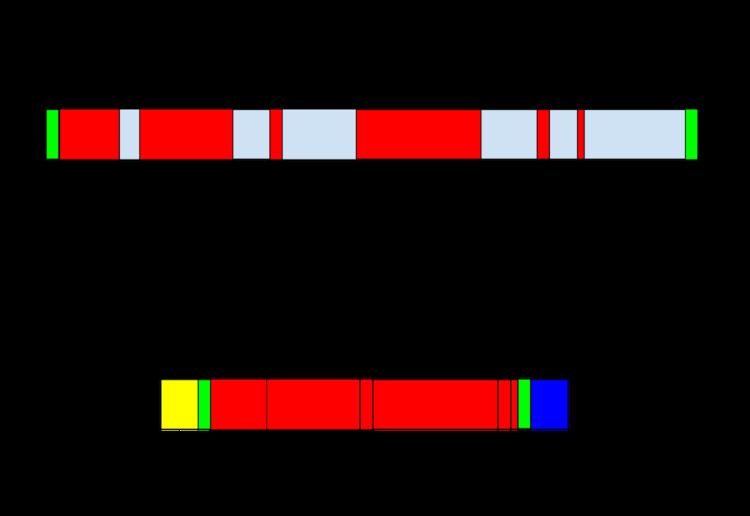 | ||
See main article Primary transcript for more details
Precursor mRNA (pre-mRNA) is an immature single strand of messenger ribonucleic acid (mRNA). Pre-mRNA is synthesized from a DNA template in the cell nucleus by transcription. Pre-mRNA comprises the bulk of heterogeneous nuclear RNA (hnRNA). The term hnRNA is often used as a synonym for pre-mRNA, although, in the strict sense, hnRNA may include nuclear RNA transcripts that do not end up as cytoplasmic mRNA.
Once pre-mRNA has been completely processed, it is termed "mature messenger RNA", or simply "messenger RNA".
Processing
Eukaryotic pre-mRNA exists only briefly before it is fully processed into mRNA. Pre-mRNAs are built from 5'UTRs (directly upstream from the initiation codon), different number of exons and introns and 3'UTRs which immediately follows the translation termination codon. Exons are segments that are retained in the final mRNA, whereas introns are removed in a process called splicing, which is performed by the spliceosome (except for self-splicing introns).
Additional processing steps attach modifications to the 5' and 3' ends of Eukaryotic pre-mRNA. These include a 5' cap of 7-methylguanosine and a poly-A tail. In addition, eukaryotic pre-mRNAs have their introns spliced out by spliceosomes made up of small nuclear ribonucleoproteins.
When a pre-mRNA strand has been properly processed to an mRNA sequence, it is exported out of the nucleus and eventually translated into a protein – a process accomplished in conjunction with ribosomes.
